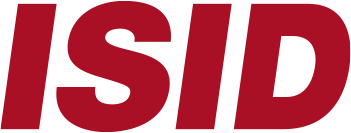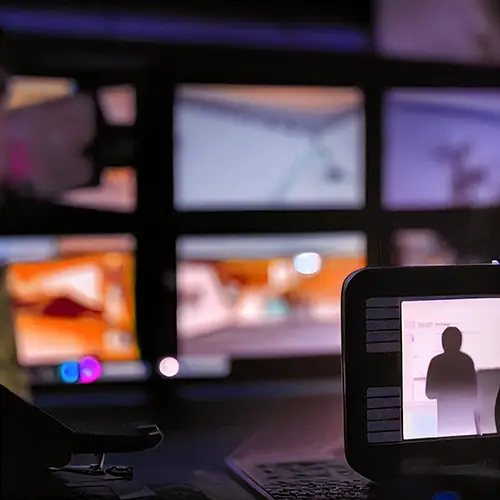AVer Europe and ISID form a strategic partnership to revolutionize video content management solutions
AVer Information Europe B.V. a leading provider of cutting-edge video conferencing and collaboration solutions, has entered into a strategic partnership with ISID, a global innovator in audio and video processing technologies. Together they aim to redefine video content management solutions tailored to the legal, government and enterprise sectors.
ISID specializes in the development of advanced solutions for processing, analyzing, managing and storing audio and video content different sectors. Its flagship product, Videoma Archivo, an enterprise multimedia content management system (EVCM), is instrumental in facilitating the efficient management of video content in organizations such as courts, tribunals, municipalities and companies where these services are essential.
AVer Europe is aware of the increasing demand for high quality video recordings in court and government proceedings, so its state-of-the-art cameras, such as the PTZ310UV2 and CAM520PRO3, are essential for capturing the sharp images needed for archiving.
“Our collaboration with ISID signifies a strategic alignment to address the unique needs of the legal, government and corporate sectors,” stated Jose Rincon, Head of Product Management at AVer Europe. By integrating ISID’s expertise in video content management with AVer’s industry-leading cameras, we equip organizations with robust solutions for efficient video recording and management.”
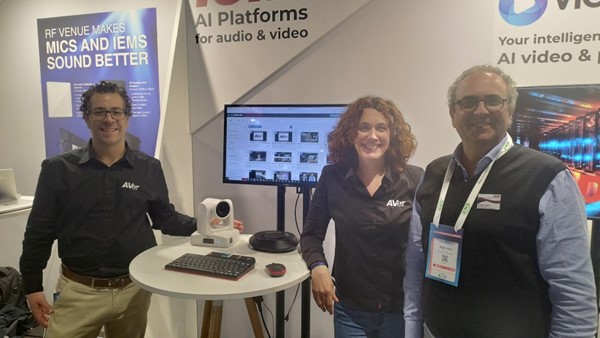
The main advantages of using AVer Europe cameras together with ISID’s Videoma Archive include:
- High-definition video capture ensures clarity and accuracy in court proceedings, government meetings and corporate events.
- Seamless integration with Videoma Archive to streamline content management and archiving, ensuring compliance with regulatory requirements.
- Increased efficiency and reliability in multimedia asset management across multiple industries.
“The strategic partnership between AVer Europe and ISID marks an important milestone in the industry by combining the technological excellence of both companies,” said Angel Lopez of ISID.
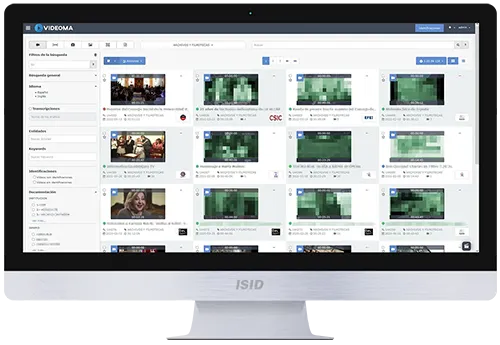
“This collaboration represents a perfect blend of AVer’s expertise in state-of-the-art cameras and ISID’s ability to deliver advanced multimedia content management solutions. Together, we are committed to providing tailored solutions that drive efficiency and customer satisfaction in the legal, government and corporate sectors.”
The collaboration between AVer Europe and ISID underscores the shared commitment to innovation, quality and customer satisfaction in delivering tailored solutions.
For more information on how the AVer Europe and ISID partnership enhances video content management solutions, please visit.
About AVer Europe:
AVer Europe is a leading provider of video conferencing and collaboration solutions offering a wide range of products and services designed to improve communication and productivity in a variety of industries.
About ISID:
ISID is a global company that develops solutions for the processing, analysis, management and storage of audio and video, whether archived, streaming or live (TV). Its solutions integrate advanced AI modules and are used in multiple sectors, such as security, government and public administration, media agencies, education, healthcare and the legal field.
How to manage a vast image archive?
Many companies have an immense image archives of pictures that have been piling up for the past years on some storage system o, even worse, several of them. The time has come to convert this simple stored files into a company asset that you can use for almost any purpose, be it marketing, internal training, documentation, or whatever. You just need the right tool for it…
Where is your image archive?
The rise of digital photography and the easy with that pictures are taken nowadays has resulted in enormous image archives both in your private life, and in your work life. Every company, nowadays, has hundreds or thousands of digital photos lying around on hard disks or other storage media. Product presentations, events, R&D pictures…digital images are taken everywhere.
And many companies do not realize that they represent a really valuable asset that can be used and exploited. But for that you need to consolidate the different image storage locations in one place and use some kind of digital asset management (DAM) software, so you can tag the images appropriately and retrieve them whenever you need.
Collecting and storing pictures is not the same as being able to find what you need in the pool of images. With a DAM you can do exactly that. And the process is easier than you may think.

Deduplication

One important thing when archiving your photo collection is considering the space it takes up. Or, more to the point: the space it takes up unnecessarily. For example, by having multiples copies of the same picture, which is really redundant and not necessary. But how come there are multiple copies in the first place? Well, there can be a number of reasons. First of all, when different people look for images on the web, they may find the same one, and store it. Or image collections are managed by several people and become duplicated. Or individual files are copied to another place and then reunited with the original copies. The result is that in any picture collection there are duplicates.
So before archiving the whole thing, it is a good practice to do some cleaning, in the form of deduplication. There any number of utilities that do this and help you delete the excess copies of the same files. They even detect images that are different sizes, mirrored, cropped, etc. After a good deduplication, your collection is ready to be analyzed and catalogued properly.
Organizing by AI
Traditionally, sorting a picture collection is a tremendous amount of work. You have to look at the images, write down what they contain and add the metadata either to the EXIF field or to external metadata files (like XMP) if the original file format does not support EXIF. This is fine for 25 images, maybe 100, but not several thousand. Hence some help is needed.
And it comes in the form of AI, as many other things nowadays. Modern media archiving solutions, like our own Videoma Archive, use AI analyzers to open the images and “look” at them, identifying everything they contain. It can find faces, places, objects, and make general descriptions of the image content, like “trees, street, houses, bench, people” which is very much appreciated when archiving a picture collection. All of this information is stored as metadata together with the image and can be edited or completed by hand if necessary. That way, you can organize and tag your picture collection automatically in 24/7 and only change what you need, when you need it. Usually, over 90% of the info is added correctly by the system, so you don’t need to spend much time revising the keywords and tags. And, if you want to, it can also unify the picture formats into a specific one (usually JPG) but always keeping the original linked, for when you need it.

A powerful search is always needed

Once you have your picture collection indexed, you are ready to put it to good use in the company. And for that, you need a powerful search engine. Because not finding that picture of last year’s product presentation is equivalent to not having that picture at all. So you need a really powerful search engine, once you have all your images organized, to find them again and repurpose them.
In the case of Videoma, as the system tags everything, you can have potentially dozens of keywords for each picture describing its content. With the help of a search and filters you can find exactly what you need, if it is present somewhere in your collection. And them export it easily, either in the original format or converted to a generic one like JPG.
Use the cloud
We live in the era of cloud. There is no doubt about it. And this means that your picture collection is a good candidate to end up online, simplifying access from anywhere, by any device. But that is not the only advantage. You also get geographic redundancy in the storage systems, automatic backups, and a secure access, which is always nice to have, especially when you put your image collection online, so non-authorized people cannot access it.
Therefore, having your images in the cloud is always a win-win situation and allows easy access from other branches of the same company or organization, even if in other countries.

Conclusion
Ours is a visual world. Most of the storytelling you can see on the web has a big visual factor in it. Pictures are everywhere. That’s why you need to organize and manage your company’s image assets in order to make them retrievable for anyone to get some value out of them. If you put your DAM (Digital Asset Management) in the cloud, you get some additional nice-to-have features, like universal secure access, and unlimited scalability. That, together with a powerful search engine, can provide you with the means to monetize your image collection properly. Or, at least, make it really useful for the company.
Unleashing the Power of Media Monitoring Software
In the fast-paced and interconnected world of media, staying informed and in control of your narrative is paramount. This comprehensive guide aims to unravel the intricacies of media monitoring software, shedding light on its transformative capabilities and illustrating how it can empower goverments and businesses to navigate the dynamic landscape of media with precision and insight.
Understanding the Essence of Media Monitoring Software:
Media monitoring software serves as a sophisticated tool designed to track, analyze, and interpret various media sources in real-time. Both radio and TV, this software provides a centralized hub for collecting, processing, and deriving meaningful insights from diverse media channels.


Key Features of Media Monitoring Software:
- Real-Time Tracking: Media monitoring software excels in real-time tracking, ensuring that users receive immediate updates on mentions, trends, and discussions related to their brand, product, or industry.
- Diverse Source Integration: A robust media monitoring tool aggregates information from a variety of sources, offering a holistic view of online and offline media landscapes. This includes traditional news outlets, social media platforms, blogs, and more.
- Sentiment Analysis: Sophisticated sentiment analysis capabilities allow users to gauge public sentiment surrounding their brand or topics of interest. This insight is invaluable for reputation management and strategic decision-making.
- Competitor Benchmarking: Media monitoring software enables users to keep a finger on the pulse of their industry by tracking competitors. Analyzing competitor strategies and market trends helps in refining one’s own approach.
- Customized Alerts: Tailored alerts and notifications ensure that users are promptly informed about significant developments, allowing for immediate responses to emerging situations.
The Impact of Media Monitoring on Reputation:
- Proactive Crisis Management: Media monitoring software provides the tools necessary for proactive crisis management. By monitoring political figures in real time, goverments can respond swiftly, mitigating the impact.
- Strategic Decision-Making: Armed with comprehensive insights, businesses can make informed, data-driven decisions. Media monitoring guides strategic planning by providing a deep understanding of market trends, consumer preferences, and industry developments.
- Positive Brand Reinforcement: Harnessing the positive sentiment identified through media monitoring allows businesses to reinforce their brand narrative. By amplifying positive mentions and engaging with satisfied customers, companies can strengthen their brand image.

How to Choose the Right Media Monitoring Software:

- Scalability and Flexibility: Opt for a media monitoring tool that can scale with your business and adapt to evolving needs. Flexibility in data sources and customization options ensures relevance over time.
- User-Friendly Interface: A user-friendly interface is crucial for effective utilization. Look for software that offers intuitive navigation and clear visualizations to make the most of the insights provided.
- Analytics and Reporting: Robust analytics and reporting features are essential. The ability to generate detailed reports and analyze trends empowers users to derive actionable insights from the vast array of data.
- Integration Capabilities: Consider the integration capabilities of the software with other tools and platforms. Seamless integration enhances workflow efficiency and ensures that media monitoring is a cohesive part of broader strategies.
Conclusion: Maximizing Potential through Media Monitoring Software:
In conclusion, media monitoring has a pivotal role in shaping narratives, managing reputations, and making informed decisions in today’s media-driven landscape. By unleashing the power of media monitoring software as VIDEOMA MONITOR, individuals and businesses can not only stay ahead of the curve but also proactively shape their presence in the dynamic world of media. Embrace the insights, navigate the trends, and empower your brand with the transformative capabilities of media monitoring software.
ISID attends ISE 2024 at Fira de Barcelona
Once again, ISID will attend as an exhibitor at ISE 2024 (Integrated Systems Europe), the fair for audiovisual systems, which will once again be held at the Fira de Barcelona, bringing together professionals, innovators and integrators from the audiovisual sector from around the world.
Madrid, December 18th 2023. ISID, a technology company focused on AI solutions and platforms for advanced video and audio storage and analysis will attend its annual meeting with ISE 2024, from January 30 to February 2, at Fira de Barcelona. It will present its latest developments from Videoma, its enterprise video content management (EVCM) platform.
AI and the multimedia sector
The last 12 months have seen a dramatic transformation of the artificial intelligence landscape with the emergence of generative AI. But in the multimedia sector, artificial intelligence has long been helping in the organization and analysis of audio, video and photo material. In music, AI helps to improve sound quality or recover damaged files, and in images, artificial intelligence has infinite applications: from restoring or colorizing old photos automatically, to improving colors, eliminating unwanted objects or scaling images to sizes much larger than the original, almost without losses.
At ISE 2024 there will be various conferences that revolve around the theme “Smart”, touching on many areas and in which variations of AI help in daily or creative tasks in the audio and video sector. For this reason ISID will show its flagship, Videoma Archivo, and the platform’s applications to the sector.

AI in Videoma Archive

Videoma Archive is an EVCM that allows you to manage all the multimedia content of a company or organization efficiently and quickly, to allow its reuse and reuse. Videoma Archivo uses AI modules that analyze videos in search of faces, particular voices or objects, to organize large collections of material in a practically unattended way.
The system allows the rapid location of any material thanks to the creation of an advanced index using AI and the advanced search system. In addition, it transcribes audio, allowing you to find words or phrases in a matter of seconds in huge multimedia collections. The clipping function allows you to create advanced extracts and summaries from multiple input files. The fact that the platform is completely agnostic with respect to analyzer types or manufacturers allows it to be integrated into any existing environment, without having to modify it.
If you want to visit ISE 2024, get your free ticket with our code 0VZSGJRM at the ISE 2024 registration page.
About ISID
ISID is a spanish and global company that develops solutions and platforms for the processing, analysis, management and storage of audio and video, whether file-based, streaming or live (TV). Our solutions integrate advanced AI analysis modules (like biometrics, S2T, translation, object recognition, audio fingerprinting & ID, etc.) and are used in multiple sectors, such as Security, Government and Public Administration, Law Enforcement, Intelligence, Communication Agencies, Education, Media Banks, Healthcare and Legal. They are platform agnostic and can be integrated with most technology vendors and existing A/V installations.
Integrating AI Diagnostics in a HIS
2023 will undoubtedly go down as “the year of AI”. It all started with ChatGPT, but every major company is now working on some AI application in their field. In healthcare, however, this process has been going on for some years now. And it is at the stage where it can be used to diagnose medical imaging or video, looking for anomalies.
AI can help in medical imaging diagnostics
Analyzing medical images, like X-Rays, MRI or CT Scans, as well as ultrasound images or videos is hard. That is why it takes a lot of training to become a proficient radiologist, with the ability to spot changes in normal human tissues and make correct diagnosis. But, as with many other fields, artificial intelligence has also arrived in the medical sector. It is able to do a lot of things, as we are seeing in this trilogy of articles, but one of the most interesting is the possibility of doing diagnostics in medical imaging.
A properly trained AI model, that has been shown hundreds or thousands of digital medical images and videos, like those from modern X-Ray machines, or MRI, CT Scan or PET scans, can be able to spot anomalies in the tissues. Sometimes even those small anomalies that a human would not notice or see.

Early warning with AI

But why should this be important? Isn’t an experienced human radiologist better than any AI. Yes, he or she is. But, and there is a ‘but’ here, if the changes are small, the human eye, however experienced, may not notice them or dismiss them. This means that the artificial intelligence image analysis, which has received many thousands of images, could to a diagnostic or prognosis quicker and earlier than the human counterpart. And this, in turn, can help save lives. The beginning of a tumor or other anomaly, spotted by an AI algorithm before a human radiologist, can instigate further investigation by the medical professional, like additional tests or bloodwork. And this could help finding the beginning of an illness than then can be treated earlier, with a higher success rate.
What else can a medical AI help with?
Actually, almost with everything. The fact that an AI algorithm has to be trained first to be effective, is the key point here. Just like a doctor has be trained in different areas, the same can be done to an AI. In fact, an AI can be trained far more specifically than any human could, because all the AI models rely on two things: the model itself, and the data it has been trained on/is still being trained with each new patient. This allows for a kind of specialization that is difficult to achieve as a person. We can’t deal with immense amounts of data as easily as a machine can. But artificial intelligence has much more application than only image diagnosis. Here are some of them:


- Image Analysis and Interpretation. That’s the one we’ve been talking about and is only here to complete the list. AI algorithms can identify and outline abnormalities, tumors, or specific structures in medical images, helping radiologists in their analysis giving a “second opinion”.
- Quantitative Analysis. AI can provide precise measurements and quantitative data from medical images, aiding in the assessment of disease progression and treatment effectiveness. This can be very useful in medical research, for example.
- Early Warning Systems. We’ve also talked about these. The precision of an artificial vision system can surpass human abilities and detect anomalies much smaller than a person, thus raising an alarm, and starting treatment earlier.
- Tailored treatments. Artificial intelligence is able to devise personal treatment plans based on all the patient’s information, and the success rates of different drugs on similar patients, taking into account individual variations in anatomy and pathology.
- Automation. Routine or repetitive tasks, such as image preprocessing and quality control, can be automated, saving time for healthcare professionals, who can do higher value work.
- Workflow optimization. AI can enhance the speed of image analysis and interpretation, leading to faster diagnosis and treatment decisions. Besides, the algorithms can improve the quality of medical images, making it easier for healthcare professionals to interpret and diagnose.
- Reducing workload. By automating routine tasks (as seen in point 5), AI can reduce the workload on healthcare professionals, allowing them to focus on more complex cases and spend more time with patients.
- Decision Support Systems. Very close to the “second opinion” topic, AI can serve as a tool for radiologists and surgeons, providing additional insights and offering recommendations based on its analysis of hundreds of similar medical images.
- Training and Education. Although we are going to see a take on this in part III of this series, AI can be used in educational settings to simulate and generate medical imaging scenarios for training purposes, allowing healthcare professionals to enhance their skills.
Conclusion
In summary, AI in medical imaging, like our own Videomed contributes to more accurate diagnoses, improved patient treatments, and increased efficiency in healthcare workflows. One very important point is that AI is not going to substitute medical professionals, but complement them. We are still at the beginning and new fields and uses are going to be discovered in the upcoming years.
In our last article in this series of three, we are going to have a look on surgical recordings and how they can be used not only for training doctors and nurses, but also for other purposes thanks to the intervention of AI. To see first part here.
Real-Time Insights for Political Personalities: The Power of Media Monitoring Software
In the ever-evolving landscape of politics, staying ahead of the curve is not just advantageous – it’s essential. This article delves into the transformative power of media monitoring software for political personalities, emphasizing how real-time insights can shape strategies, enhance communication, and ultimately influence public perception.
Understanding the Dynamic Nature of Political Monitoring:
Politics is a realm where situations can change in the blink of an eye. Whether it’s breaking news, emerging controversies, or shifting public sentiment, political figures need to be proactive in their approach to navigate the complexities of the landscape.
The Crucial Role of Real-Time Monitoring:
- News Articles Tracking: Media monitoring software allows political personalities to track news articles in real-time, providing a comprehensive overview of how their actions and policies are being covered by the media.
- Social Media Surveillance: In an era where social media is a powerful influencer, monitoring platforms in real-time is imperative. Media monitoring software aggregates social media data, offering insights into trending topics, public sentiment, and reactions to political events.
- Tracking Competitor Strategies: Real-time insights extend beyond individual political figures. Media monitoring software enables the tracking of competitor strategies, helping political personalities understand how their peers are responding to similar situations.

Harnessing Facial Recognition in Media Monitoring for Political Personalities:
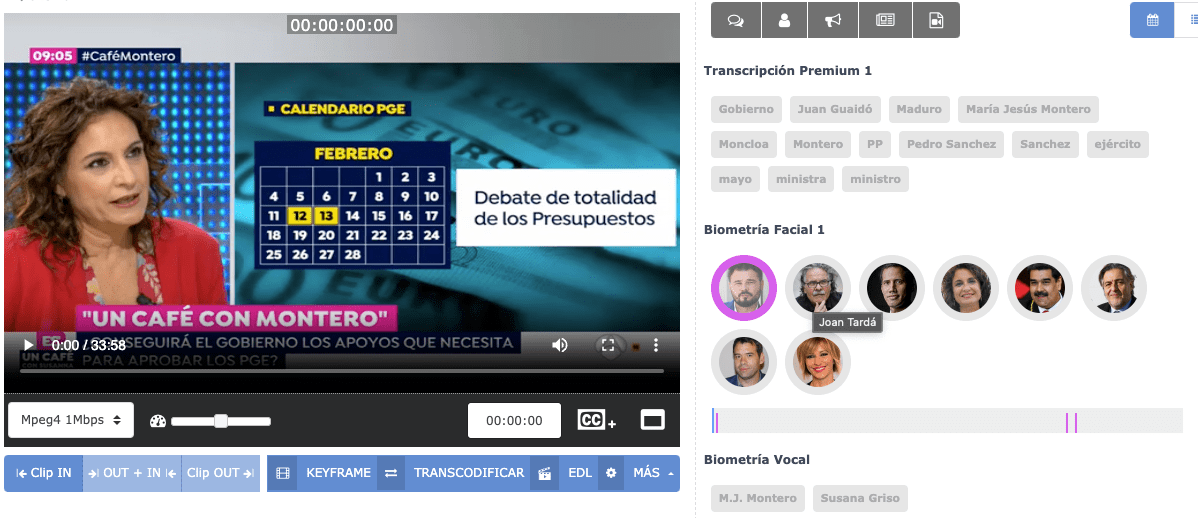
In the realm of media monitoring software tailored for political personalities, facial recognition technology stands as a formidable tool for garnering real-time insights. Through sophisticated algorithms, facial recognition enables the identification and analysis of individuals appearing in media content, ranging from televised appearances to online videos and social media posts. This technology allows political figures and their teams to track their visibility, and assess the effectiveness of their communication strategies with unparalleled accuracy. By harnessing the power of facial recognition within media monitoring software, political personalities gain invaluable insights into their media presence, enabling them to make informed decisions and adapt their messaging strategies in real-time.
Strategic Decision-Making with Real-Time Data:
- Immediate Crisis Response: Political crises demand swift and informed responses. Real-time insights from media monitoring software empower political figures to address crises promptly, minimizing the potential impact on their public image.
- Adapting Communication Strategies: As situations unfold, real-time data allows for the adaptation of communication strategies. Political personalities can tailor their messages based on current narratives and public sentiment.
- Optimizing Campaigns: For those engaged in political campaigns, real-time monitoring is invaluable. Adjusting campaign strategies based on immediate feedback ensures a more responsive and effective outreach.

Conclusion: Empowering Political Figures with Media Monitoring:
In conclusion, the power of real-time insights offered by media monitoring software such as VIDEOMA MONITOR cannot be overstated in the world of politics. For political figures aiming to navigate the complexities of the landscape and maintain a positive public image, the ability to monitor, analyze, and respond in real-time is a strategic imperative. As technology continues to advance, the integration of real-time media monitoring tools will play an increasingly pivotal role in shaping the success and influence of political personalities on the public stage.
Demystifying Video Management Systems: A Comprehensive Guide
In the ever-evolving landscape of digital technologies, video management systems (VMS) have emerged as essential tools for businesses seeking to optimize their video content and surveillance operations. This comprehensive guide aims to demystify VMS by providing an in-depth overview of what they are, their features, and how businesses can benefit from implementing them. Additionally, we’ll explore the integration with AI Video Technologies to enchance funcionalities and efficiency.
Understanding Video Management Systems (VMS):
At its core, a video management system is a software platform designed to manage, store, and analyze video footage from surveillance cameras or other sources. VMS provides users with centralized access to video content, allowing for easy monitoring, retrieval, and playback of recorded footage. This centralized approach streamlines video management processes, improves security, and enhances situational awareness.

Key Features of Video Management Systems:

- Centralized Video Storage: VMS consolidates video footage into a centralized repository, eliminating the need for disparate storage solutions and facilitating easy access to archived content.
- Live Monitoring and Playback: Users can monitor live video feeds in real-time and playback recorded footage as needed, providing comprehensive oversight of surveillance operations.
- Remote Accessibility: Many VMS solutions offer remote access capabilities, allowing users to view video footage from any location with an internet connection, enhancing flexibility and convenience.
- Advanced Analytics: Some VMS platforms incorporate advanced analytics capabilities, such as motion detection, object tracking, and facial recognition, enabling proactive security measures and actionable insights.
- Integration with Other Systems: VMS can integrate with other security systems, such as access control and alarm systems, to provide a comprehensive security solution.
Benefits of Implementing Video Management Systems:
- Improved Security: By providing centralized access to video footage and advanced analytics capabilities, VMS enhances security by enabling proactive threat detection and rapid response to security incidents.
- Enhanced Efficiency: VMS streamlines video management processes, reducing the time and resources required to monitor, retrieve, and analyze video footage, thus improving operational efficiency.
- Increased Productivity: With remote access capabilities, users can monitor surveillance operations from any location, allowing for greater flexibility and productivity.
- Cost Savings: By consolidating video storage and streamlining operations, VMS can lead to cost savings associated with reduced hardware and maintenance expenses
Integration of OCR, Subtitling, and ALPR:
- OCR (Optical Character Recognition): Integrating OCR technology within VMS enables the automatic extraction of text from video footage, allowing for easy indexing, searching, and retrieval of relevant information.
- Subtitling: VMS can incorporate subtitling features to enhance accessibility and comprehension of video content, particularly in multi-language environments or for individuals with hearing impairments.
- ALPR (Automatic License Plate Recognition): ALPR technology integrated within VMS enables automatic identification and tracking of license plates, enhancing security and enabling applications such as parking management and law enforcement.

Conclusion:
In conclusion, video management systems as VIDEOMA ARCHIVE play a vital role in modern business operations, providing centralized access to video content, enhancing security, and improving operational efficiency. By understanding the features and benefits of VMS, businesses can make informed decisions about implementing these systems to meet their specific needs. Additionally, the integration of OCR, subtitling, and ALPR within VMS further enhances functionality and efficiency, making them indispensable tools for businesses in various industries.
Medical video in a PACS and a HIS
Digital Medical Imaging is an important part of the modern diagnostic process. Be it X-Rays, CT Scans, MRIs or ultrasound machines, all of them produce DICOM images today, so the doctors can see them on screen at any point. But the reality isn’t so rosy at all…
Format incompatibility
In today’s healthcare, medical imaging has an ever more important role when diagnosing a patient’s condition. The systems have gotten so advanced and have such good resolution, that diagnostics are made with more certainty than ever. But, in contrast to the imaging “of old” (where “old” is just a couple of years back), today most of the medical imaging devices generate digital files, instead of having to develop film or the like.
On top of that, most of them do not generate only static images, but also video files. For these images there is the DICOM format (Digital Imaging and Communications in Medicine) which is a standard protocol for the management and transmission of medical images and related data. In fact, DICOM also supports several video formats as well as multiframe images, like the ones in CT scans. However, this is where the problems arise. Most vendors have a particular interpretation of their image formats, in order to lock the hospital to that particular brand, avoiding too much compatibility with the rest of the competing vendors.
The resulting scenario is one in which the medical professional cannot always use a PACS (Picture Archiving and Communications System) to access the images from his or her office, but has to go physically to the machine in question that did the images, and watch them there. The fact that DICOM uses no compression in the images to avoid artifacts (that could be misleading the doctor or radiologist) is one of the reasons. When recording video this also intensifies, as these files are so huge, that they usually cannot be transmitted over the hospital network in an efficient way. Hence the doctor has to go to the machine and watch the exploration video in situ. And this is far from ideal.

Information scattering

This situation leads to losing an enormous amount of time when doing one simple diagnostic, especially if the hospital is big. If you multiply this by all the patients that have imaging done, and the doctors that have to run around the hospital to gather all the information they need in order to make an accurate diagnostic, is it easy to see that this information scattering is not only costing time, but also money. And that the medical care quality suffers greatly under it.
The solution for DICOM images is usually the aforementioned PACS, which can be accessed from any computer in the hospital (or outside of it, depending on the security rules enforced). But most PACS do not support video directly, for a variety of reasons, chief among which is the file size and different formats. Hence the information scattering continues, because some data is in the HIS (patient data), some in the PACS (static images) and some on individual machines (medical video).
Images and video in the PACS
But there is a solution to this: adding a secondary video PACS can solve the problem of viewing medical video directly from the doctor’s office, without having to change the hardware or software in the hospital. It just needs to add the secondary video PACS, which integrates with the current PACS and, as we will see in a bit, also with the HIS. Videomed PACS is such a secondary video PACS.
What the secondary PACS does is gathering all the video from the machines by direct connection to the network and storing it centrally. Then all the formats are unified to a single one, usually a high quality MP4. This proxy file then can be viewed with ease and needing a low network bandwidth, from anywhere in the hospital, just be connecting to the PACS. If the doctor or surgeon needs to see the original file, this is also possible over a high speed network connection but, instead of involving the PACS, which may be used by all of the hospital constantly, the video is provided by the secondary PACS instead, taking load from the main PACS.
On top of this, the system anonymizes all the patient data for privacy and compliance reasons, so it never leaves the HIS or main PACS. And it is possible to specify retention periods for the videos (due to the space they take up in the system), so they are converted into lower resolution copies after a time. This makes for efficient storage, and keeps the system tidy, without losing any information.
And on top of this, platforms like Videomed PACS make use of artificial intelligence analyzers in order to catalogue the videos automatically, helping to speed the process up further, putting everything into place without human intervention. And, as we will see in part II of this series, it can integrate diagnostic AI analyzers as well, providing even more help for radiologists or surgeons, who can rely on a “second opinion” of the AI system.
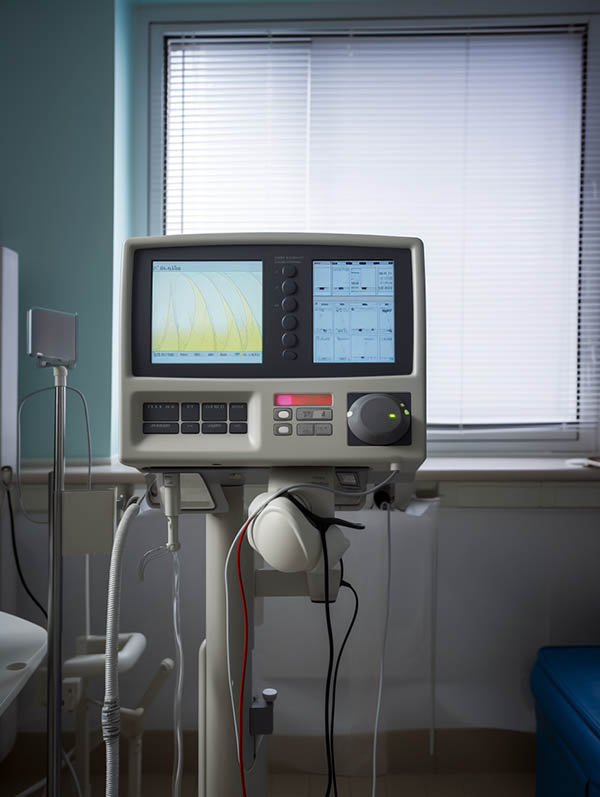
One central command point: the HIS

The use of a secondary PACS has another advantage: it can be integrated directly with the HIS, so all of the information can be retrieved together with all of the other patient record. In fact, with this system, you can integrate clips of important diagnostic videos directly in the HIS. The integrated viewer gets the data from the secondary PACS in a transparent manner, but it is all viewed inside the HIS, which is the central point for the doctors, so all of the information is on one screen, helping make better and quicker diagnostics. This way, the medical professional doesn’t have to walk through the hospital to gather everything he needs for a single patient, and can work much more efficiently.
Conclusion
To avoid scattering of medical video through a hospital or clinic, a secondary video PACS is the best solution, as it provides integration into the regular PACS, as well as the Hospital Information System, so the doctors can get all the diagnostic information they need in one place, all at once, and can work more efficiently, with all the data at hand.
In our next article in this series of three, we are going to talk about how AI Diagnostics are helping doctors and surgeons make better and quicker diagnostics. We’ll conclude the series with a look on surgical recordings and how they can be used not only for training doctors and nurses, but also for other purposes.
Crisis Management in Politics: A Deep Dive into Media Monitoring for Political Personalities
In the world of politics, where public perception can change in an instant, effective crisis management is paramount for political personalities. This article explores the critical role of media monitoring software in the realm of politics, providing a comprehensive understanding of how these tools enable swift responses and strategic decision-making during challenging times.
Understanding the Complexity of Political Crises:
Political figures often find themselves navigating through a myriad of challenges, ranging from unexpected controversies to rapidly evolving situations that have the potential to profoundly impact their public image and credibility. In the face of such tumultuous circumstances, the implementation of a well-executed crisis management strategy becomes paramount. Such strategies serve as a crucial lifeline, allowing political personalities to effectively address issues, provide transparency, and ultimately safeguard public trust amidst periods of uncertainty and scrutiny.

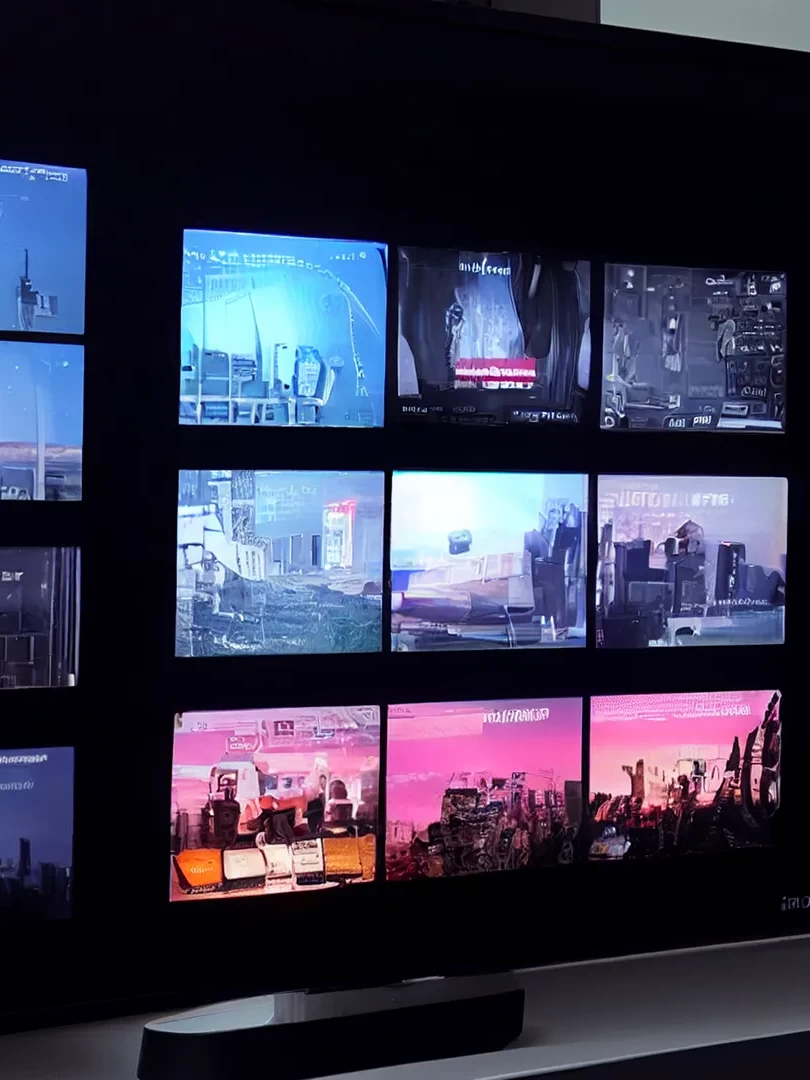
The Swift and Informed Response with Media Monitoring Software:
- Real-Time Monitoring: Media monitoring software provides real-time tracking of news articles, social media, and online discussions. This allows political personalities and their teams to stay informed about breaking news and emerging narratives that could affect their reputation.
- Sentiment Analysis: Through sentiment analysis, media monitoring tools can gauge the public’s mood and perception during a crisis. Understanding sentiment helps political figures tailor their responses to address concerns and manage the narrative effectively.
- Identification of Key Issues: Media monitoring software identifies key issues and talking points within the crisis. This insight enables political personalities to prioritize their messaging and focus on addressing the most critical aspects of the situation. An AI tecnology as wordspotting, is helpful.
- Competitor Analysis: In the midst of a crisis, knowing how competitors or opposing figures are responding is crucial. Media monitoring tools allow for comprehensive competitor analysis, ensuring that responses are aligned with the broader political landscape
Proactive Crisis Management Strategies:
- Early Warning System: Media monitoring serves as an early warning system, enabling political personalities to detect potential crises before they escalate. Timely intervention can prevent the amplification of negative narratives.
- Strategic Messaging: Armed with real-time data and sentiment analysis, political figures can craft strategic messages that resonate with the public. This proactive approach helps shape the narrative and steer the conversation in a more favorable direction.
Looking Ahead: The Future of Crisis Management in Politics:
Discuss the evolving landscape of crisis management in politics and how advancements in media monitoring technology, such as artificial intelligence with facial recognition and wordspotting, are shaping more sophisticated and proactive strategies.

Conclusion: Empowering Political Figures in Times of Crisis with Media Monitoring Software
In conclusion, media monitoring software serves as an invaluable tool for political personalities facing crises. The ability to monitor, analyze, and respond in real-time allows political figures to navigate challenging situations with agility and precision, ultimately safeguarding their public image and maintaining trust in the political arena. As the political landscape continues to evolve, the integration of advanced media monitoring tools becomes increasingly indispensable for effective crisis management, tools such as VIDEOMA MONITOR are pivotal.
ISID attends IntegraTEC in Colombia
IntegraTEC, the trade show for integrators in Latin America, was held this year in Bogotá, Colombia, and brought together hundreds of manufacturers and professionals of multiple technological systems. ISID attended to learn about the latest developments from the world of audio and video.
IntegraTEC 2023
Madrid, November 6th 2023. ISID, a technology company focused on AI solutions and platforms for advanced video and audio storage and analysis has attended this year’s IntegraTEC in Colombia, which was held on October 26 and 27. IntegraTEC is the Latin American conference and Trade Show for the integration of technological systems. It brings together professionals and technologies for the integration of multiple converging sectors with a special focus on Latin America. At ISID we wanted to take advantage of the opportunity to attend to exchange knowledge with other professionals in the audio and video sector, as well as artificial intelligence applied to these areas.
The Latin American market is of great relevance for ISID and therefore the opportunities to network, meet local manufacturers and integrators first-hand, and share knowledge with other professionals and experts are very valuable for us. We already have some projects in Latin America, for example in Colombia, Ecuador and Peru and our goal is to better understand the South American market, to adapt our technology to local markets and thus offer maximum value.
On the other hand, IntegraTEC was the perfect setting to show our latest innovations in AV analysis and archiving technology, as well as our products, such as Videoma Archive. Our audio and video processing, analysis, management and storage platform integrates advanced AI modules and is currently used in multiple sectors, such as Security, Government and Public Administration, Communication Agencies, Education, Media Banks, Health and Legal.
We will also attend the next edition of IntegraTEC, which will be held on August 14 and 15, 2024 in Mexico.

About ISID

ISID is a spanish and global company that develops solutions and platforms for the processing, analysis, management and storage of audio and video, whether file-based, streaming or live (TV). Our solutions integrate advanced AI analysis modules (like biometrics, S2T, translation, object recognition, audio fingerprinting & ID, etc.) and are used in multiple sectors, such as Security, Government and Public Administration, Law Enforcement, Intelligence, Communication Agencies, Education, Media Banks, Healthcare and Legal. They are platform agnostic and can be integrated with most technology vendors and existing A/V installations.
